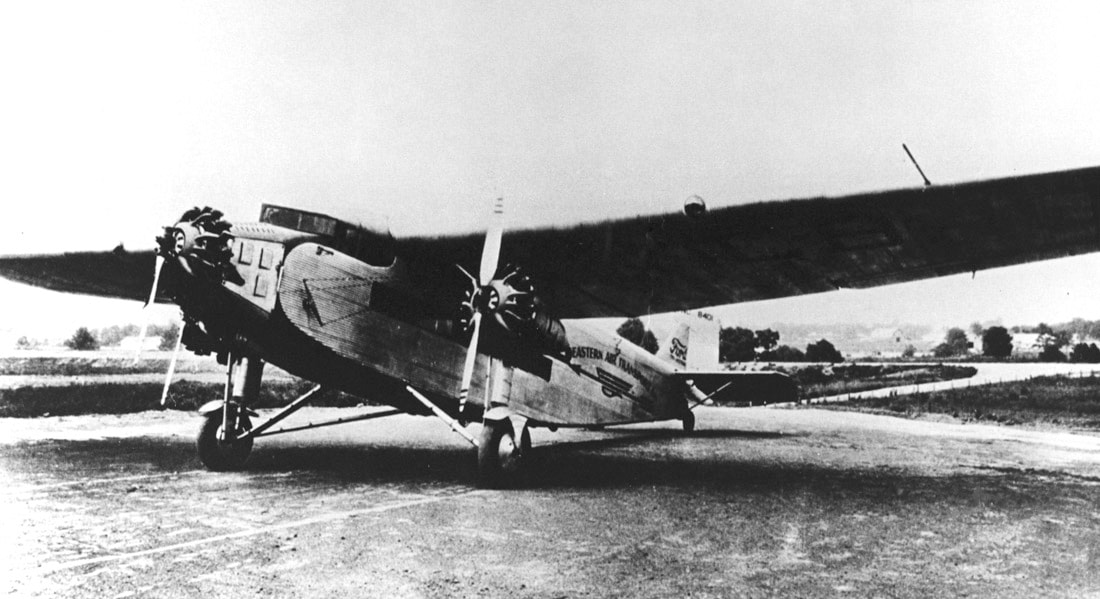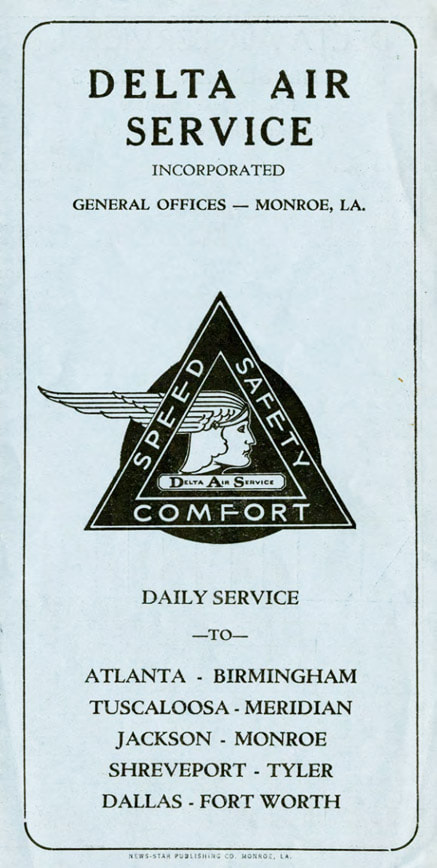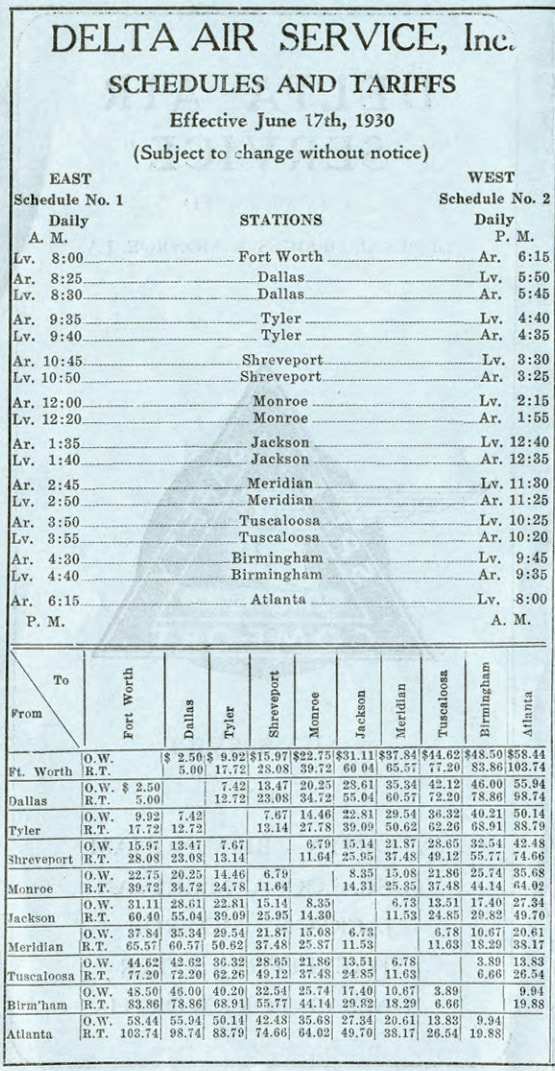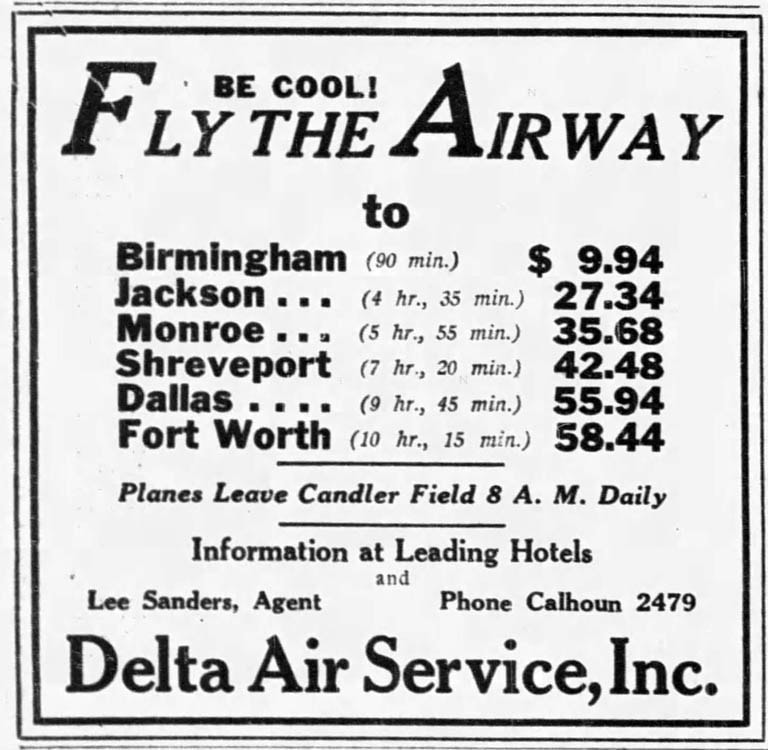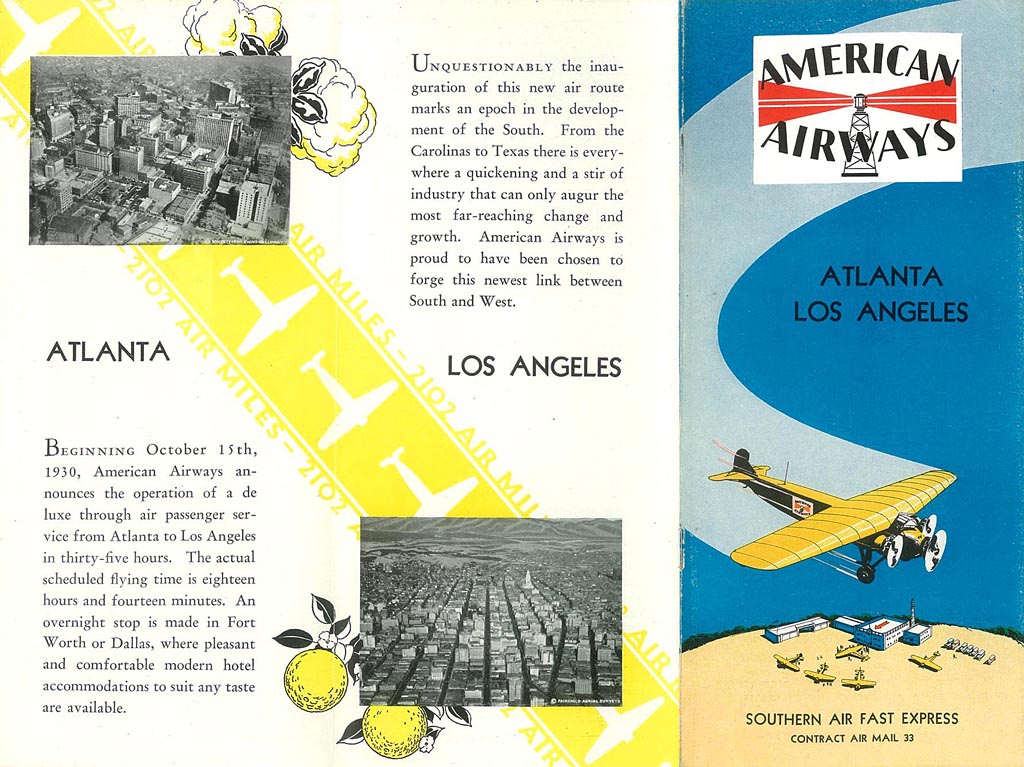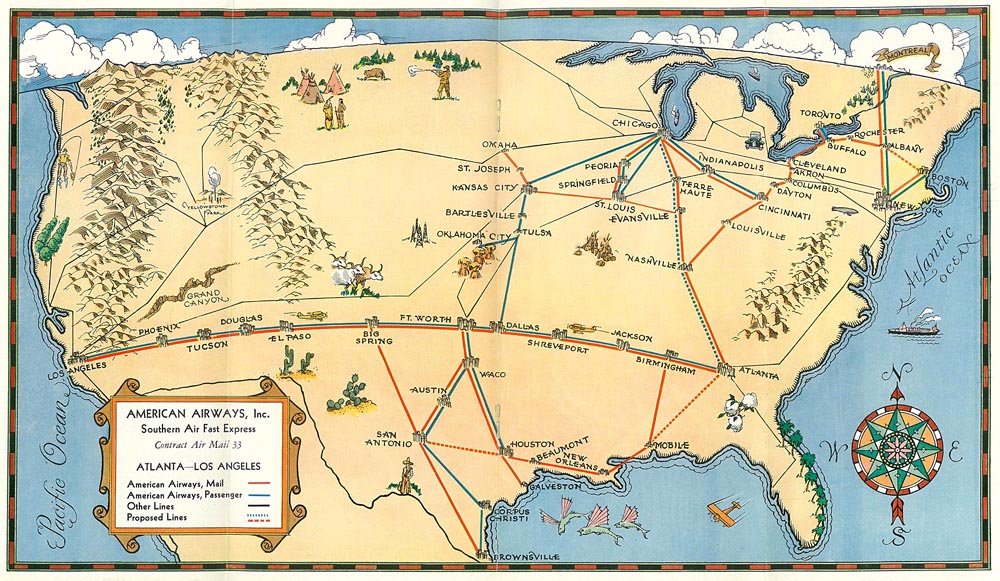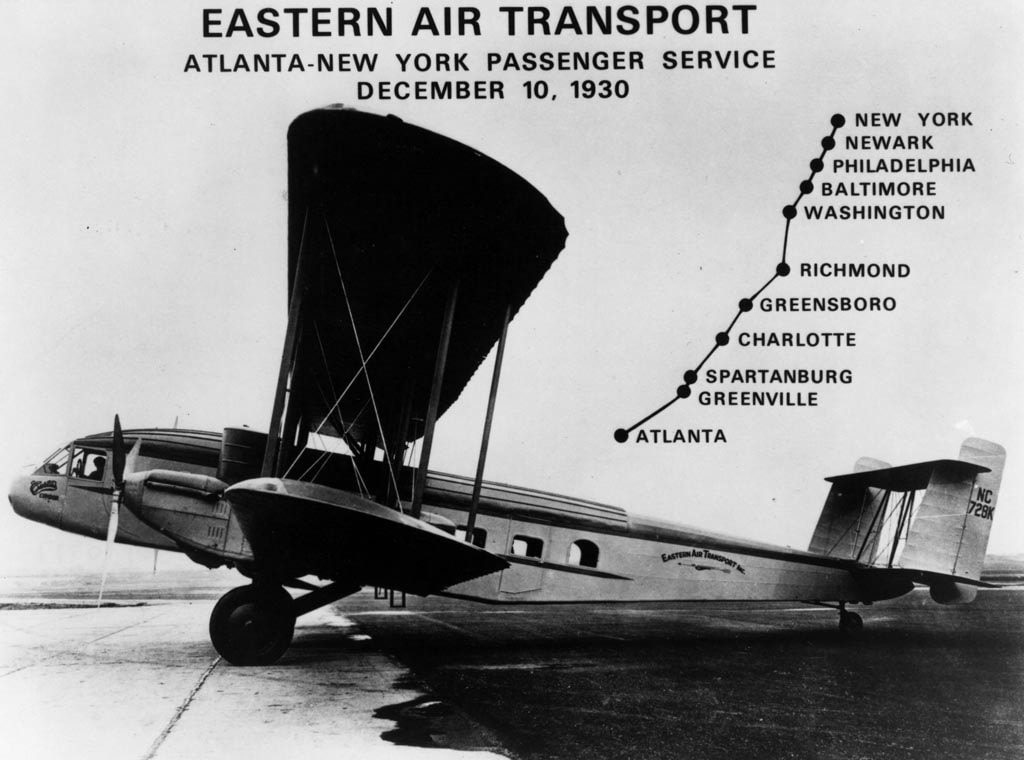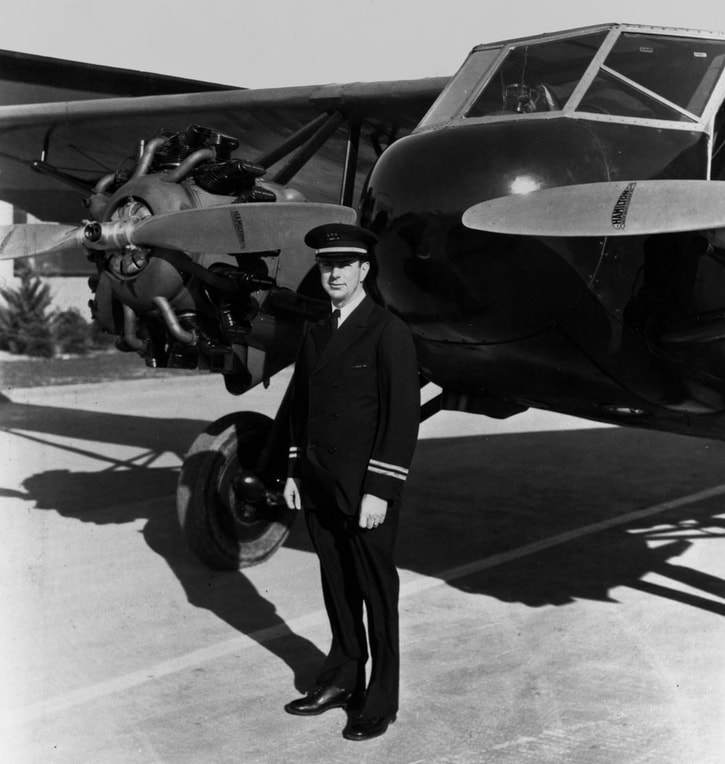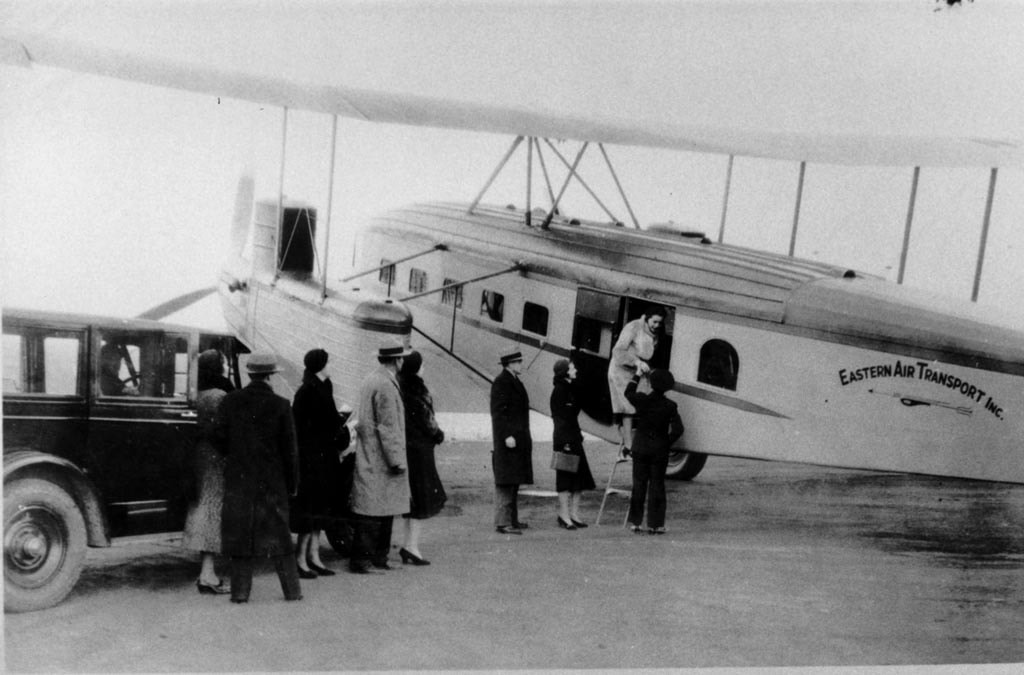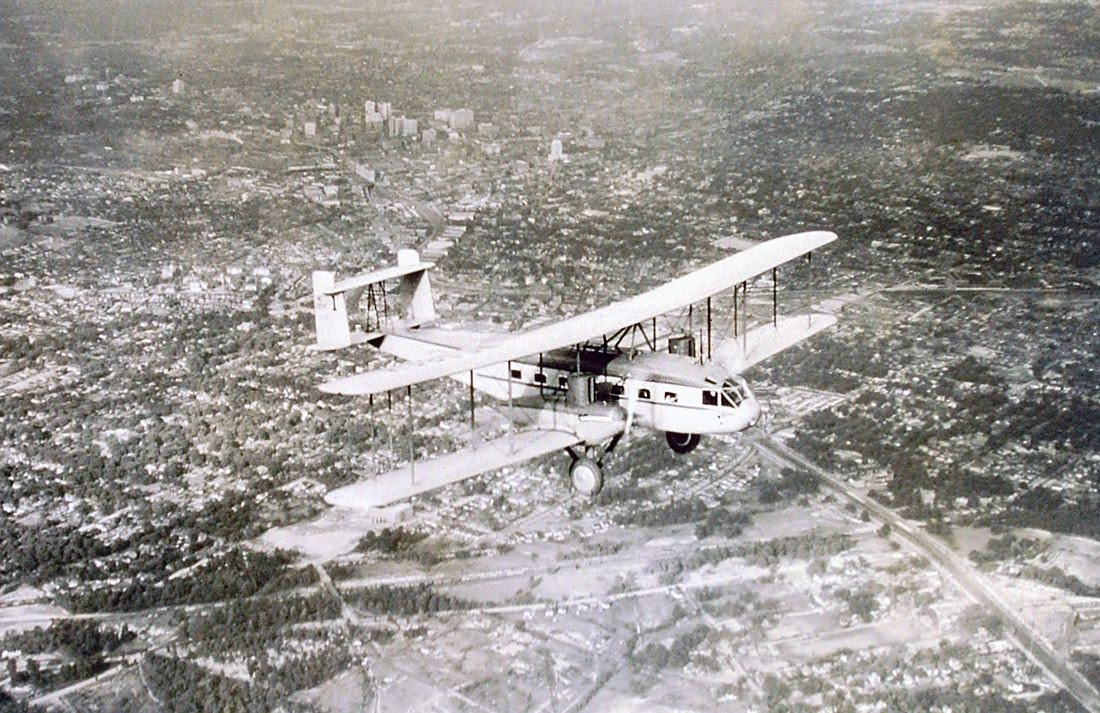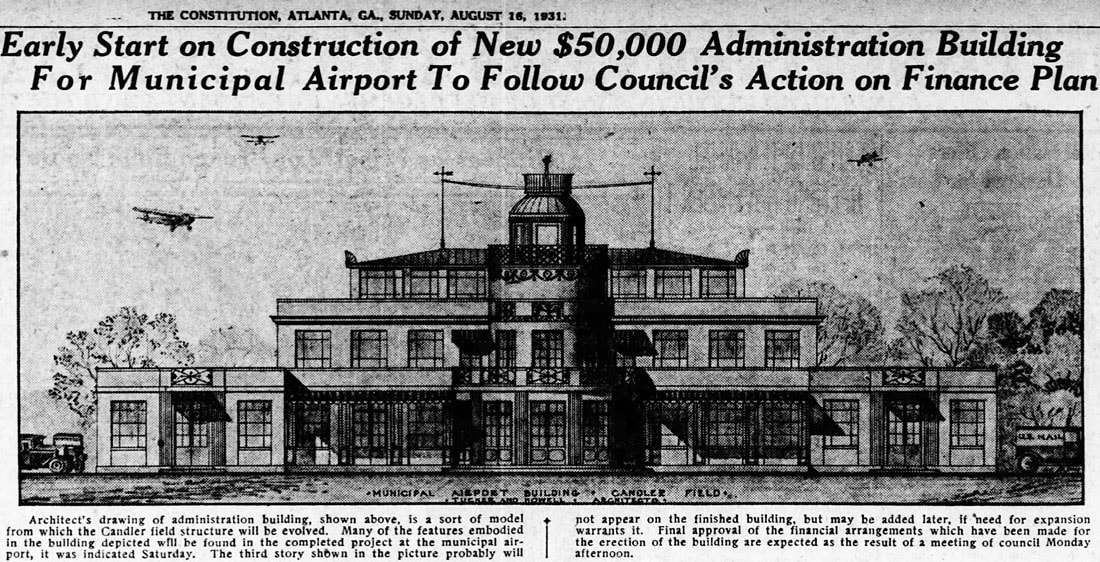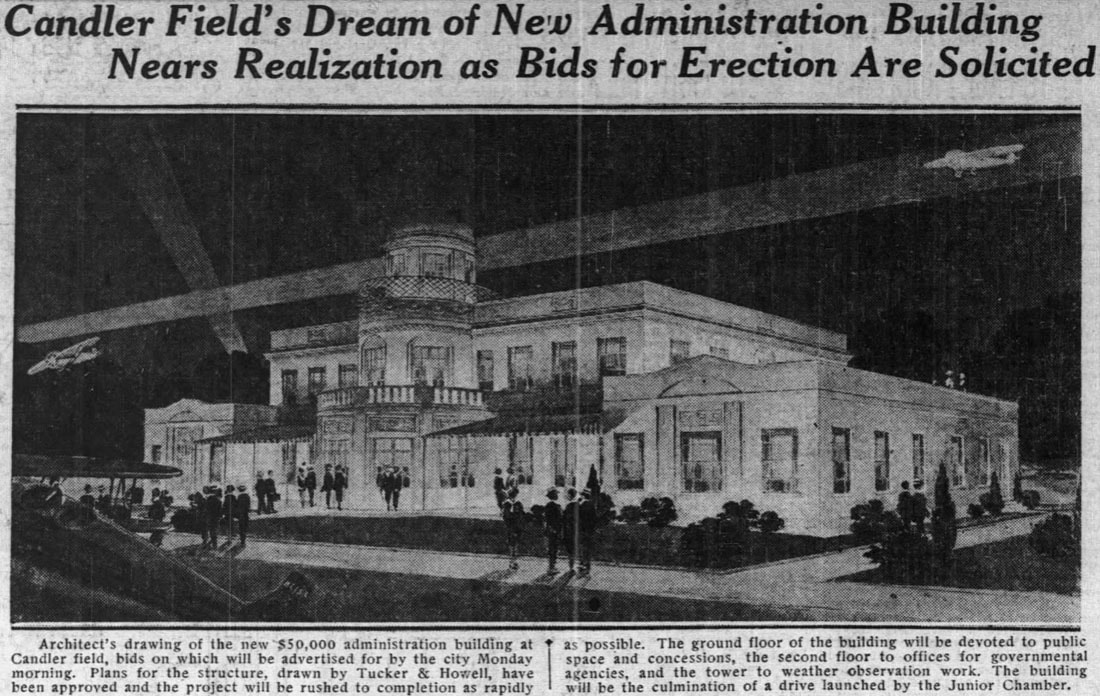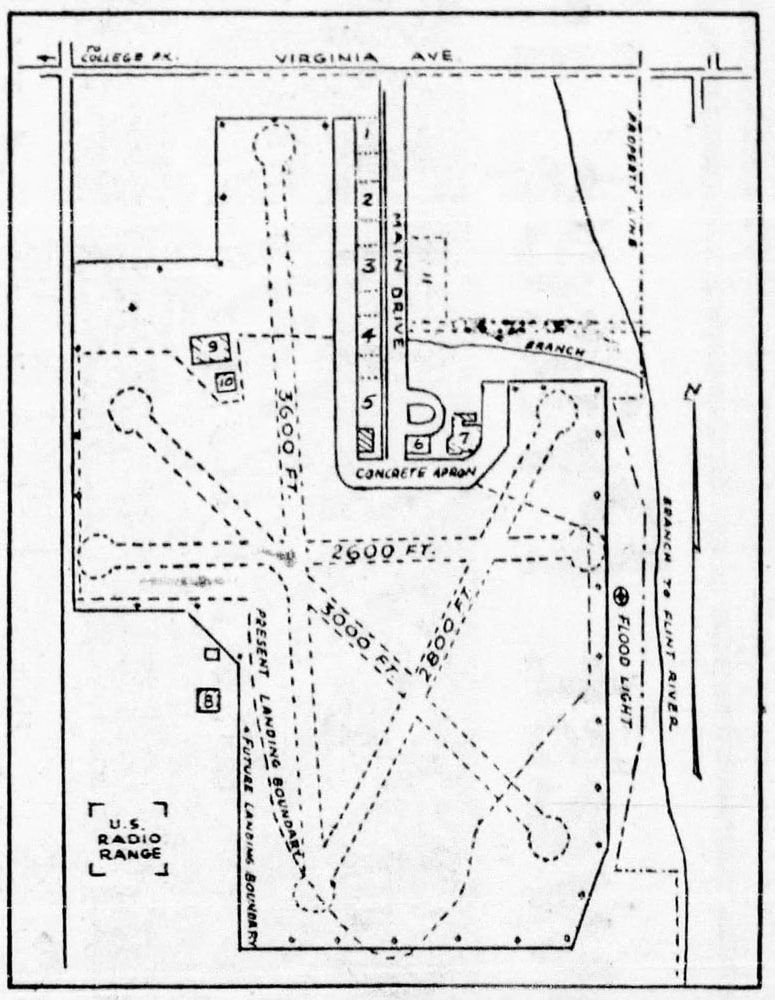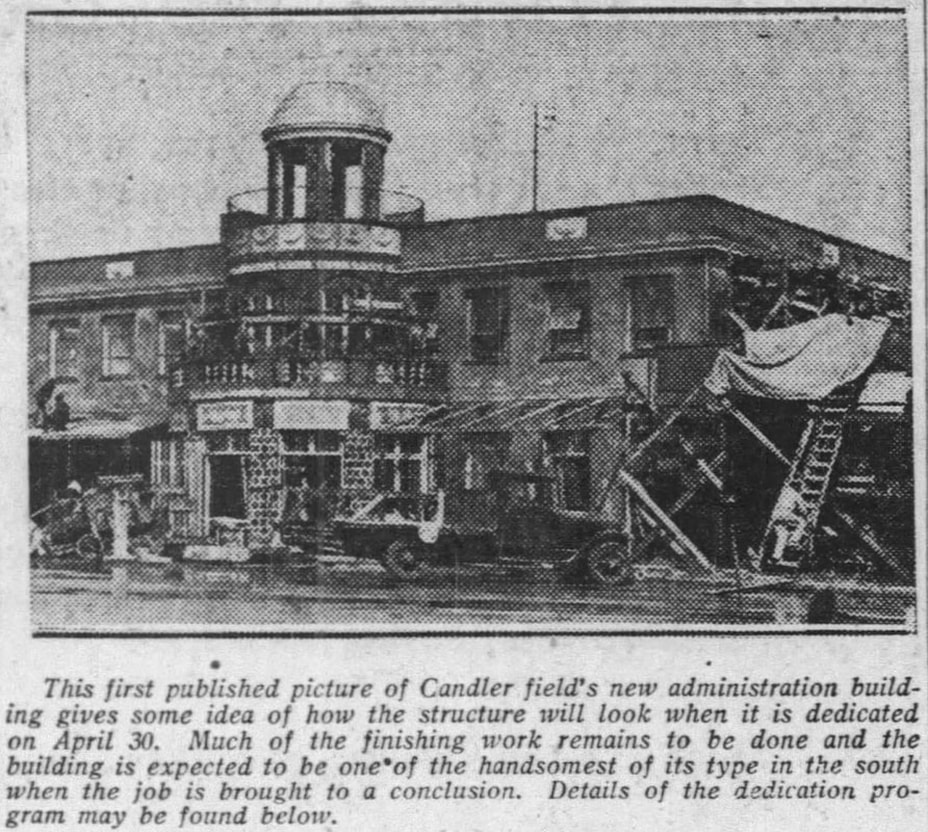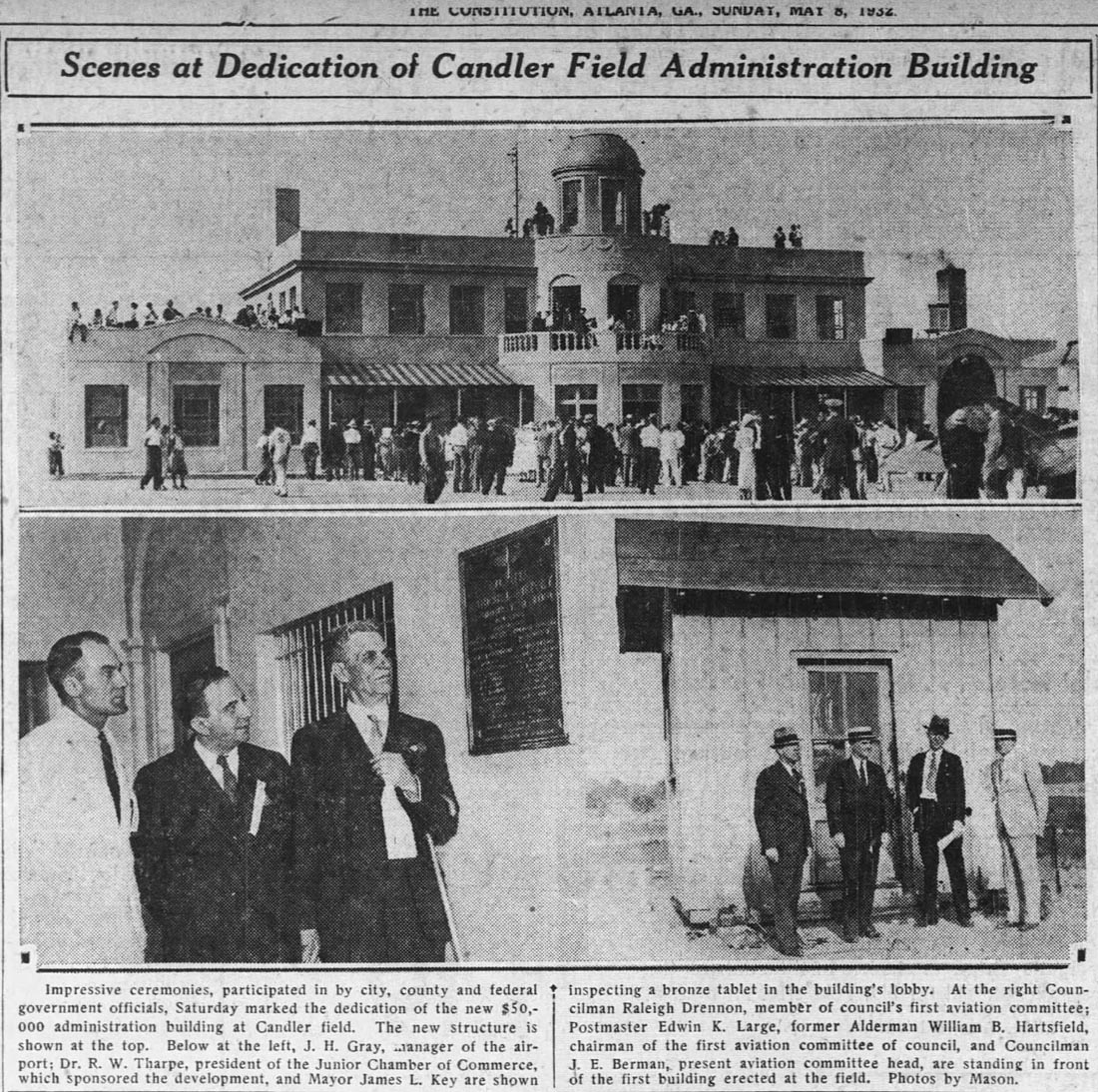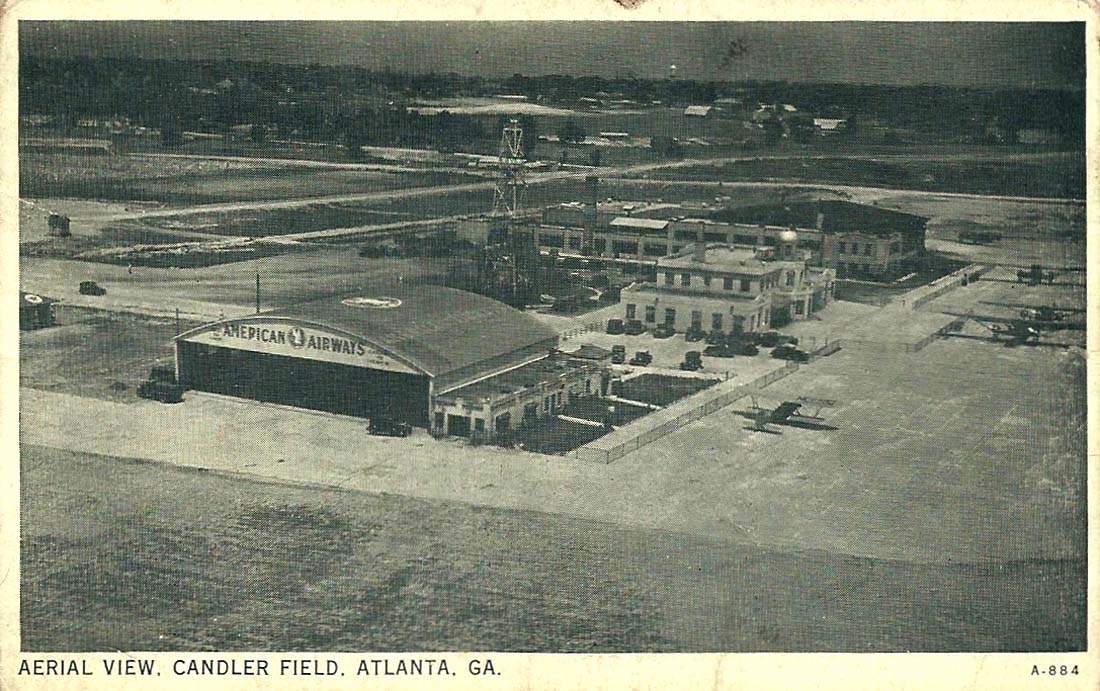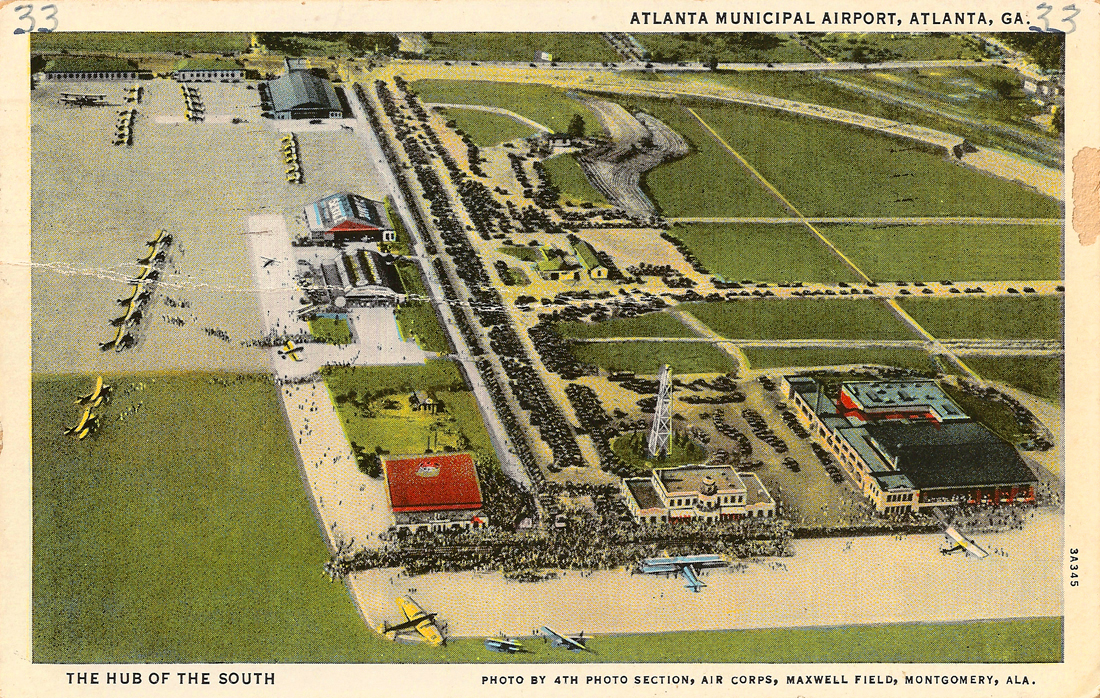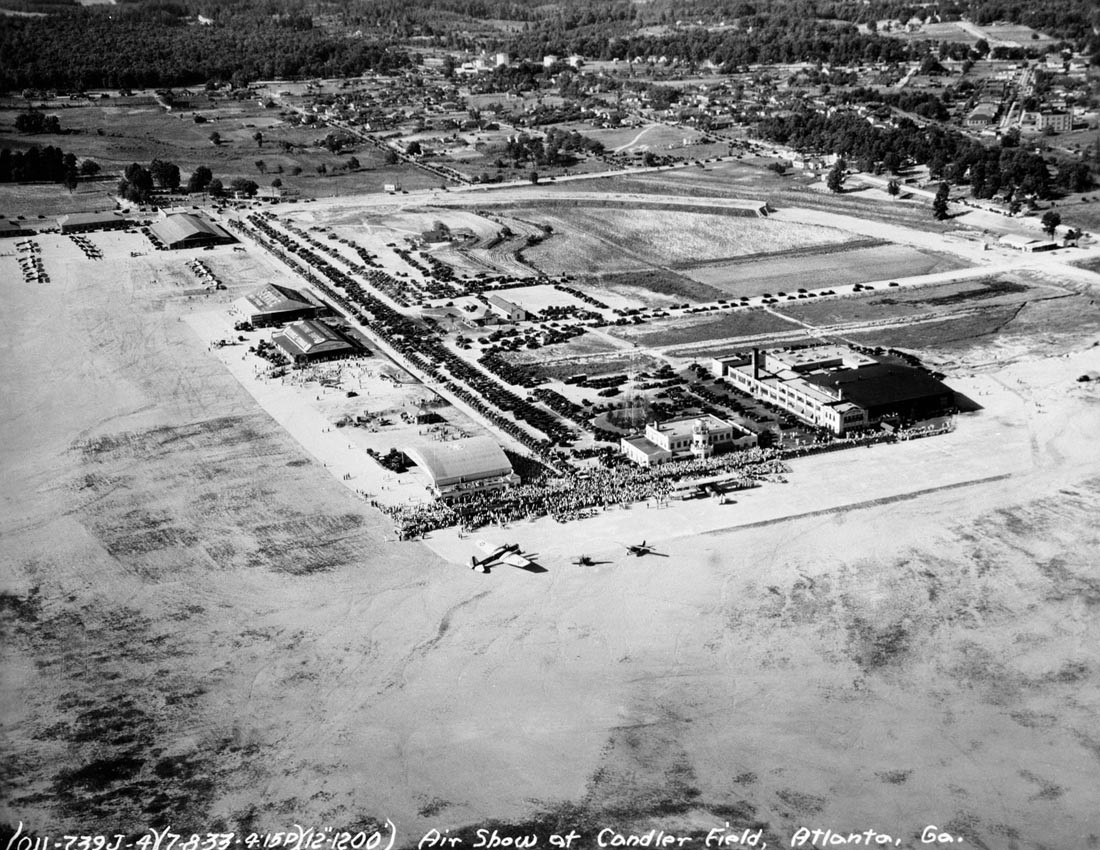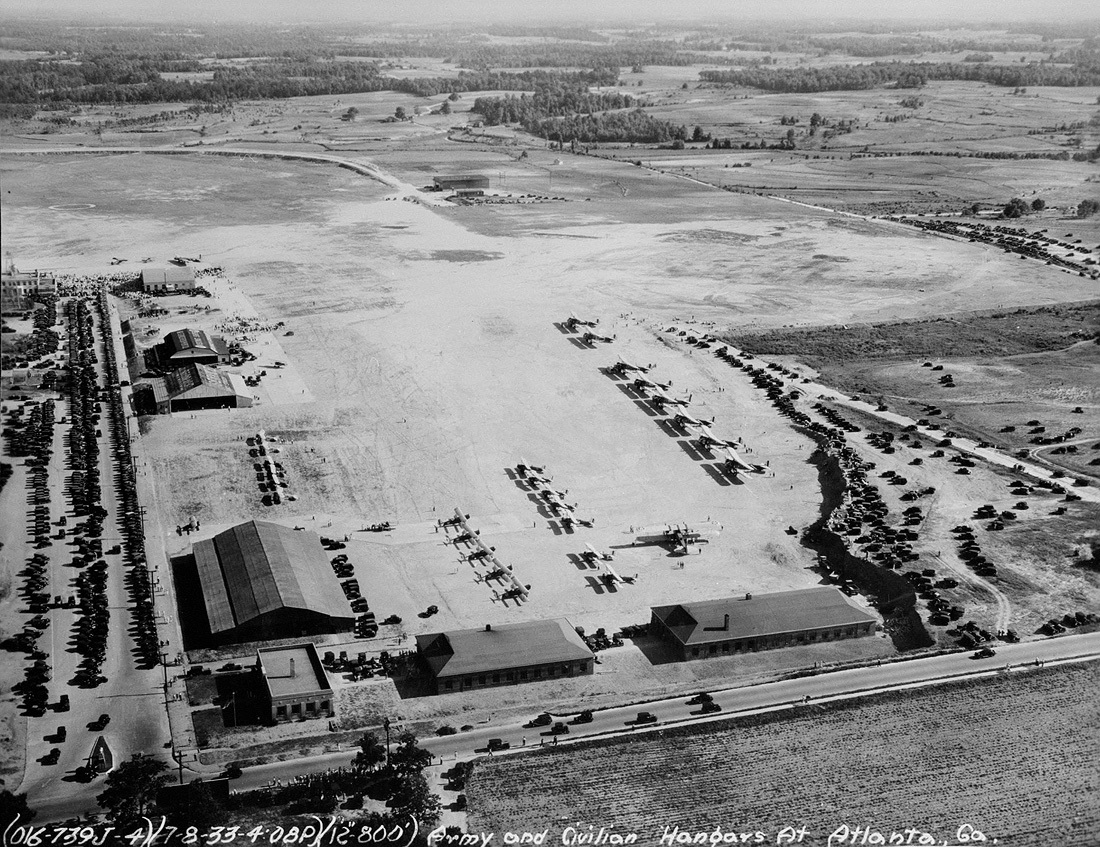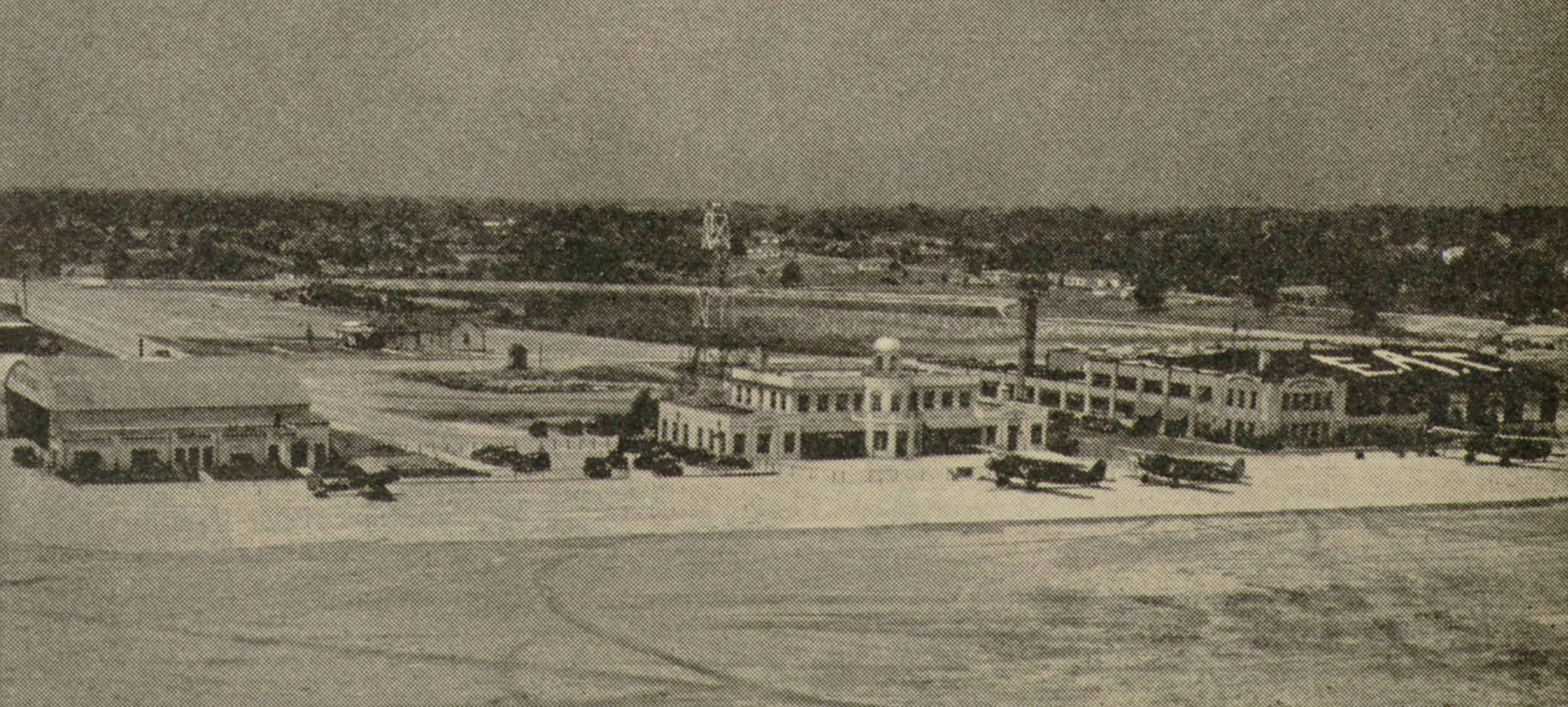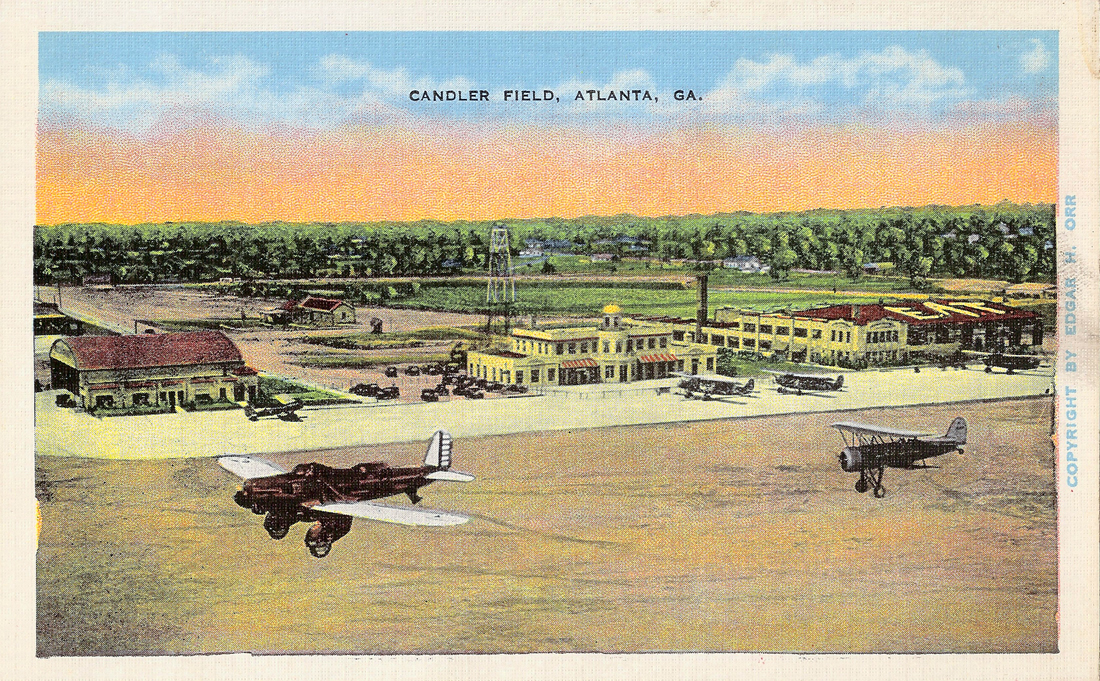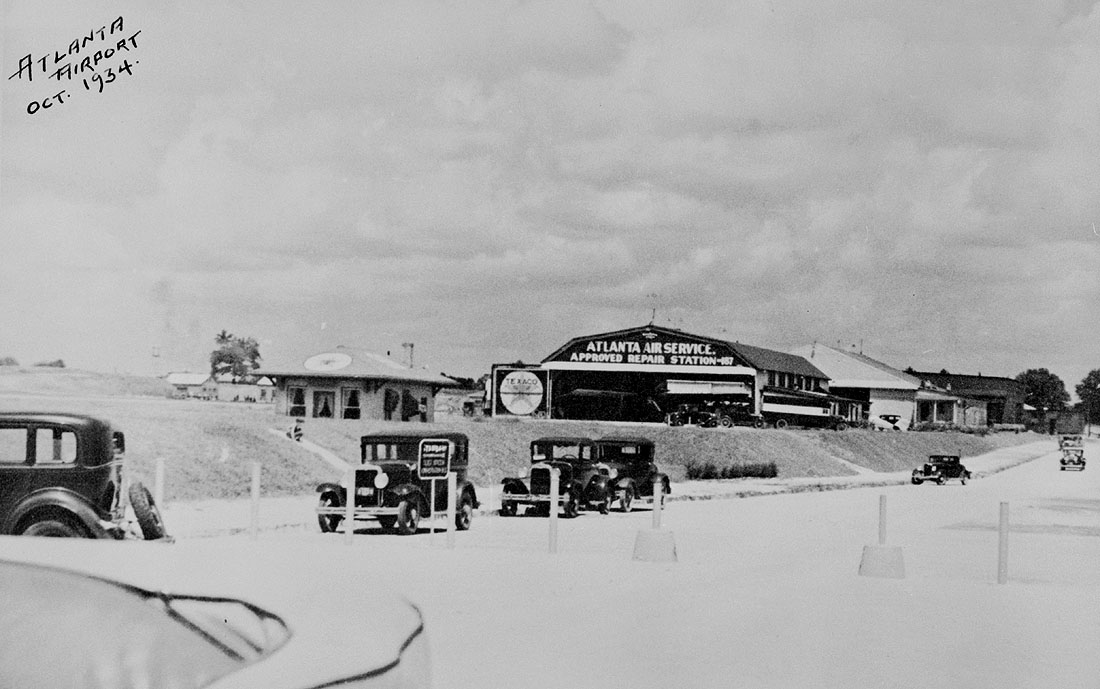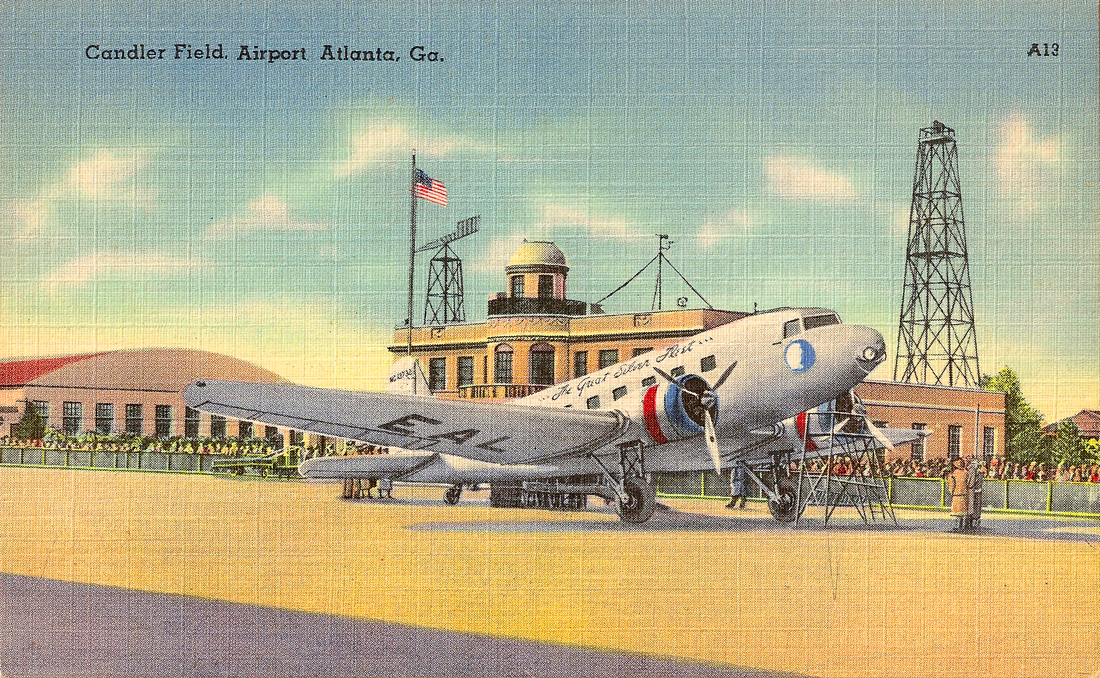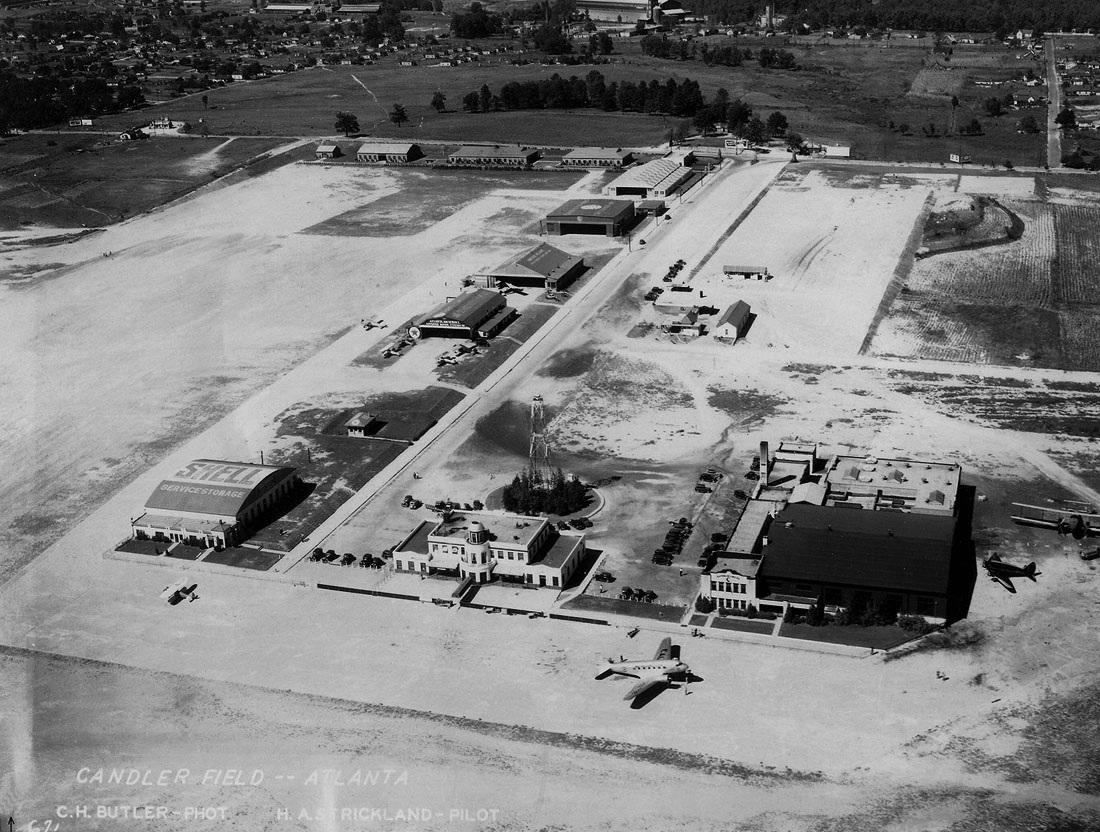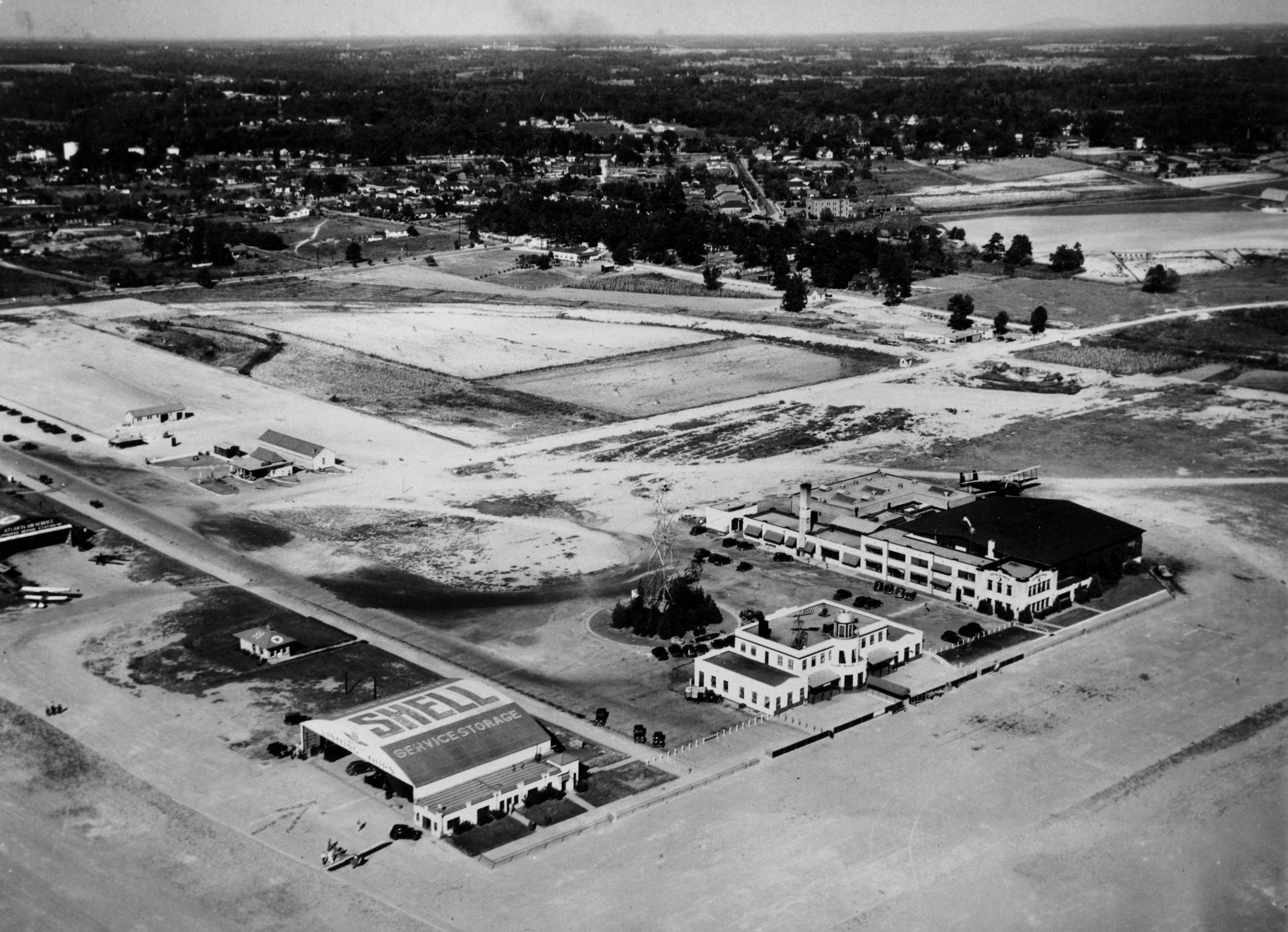ATLANTA AIRPORT IN THE EARLY 1930s
Development of the airport and airliner technology was astonishingly rapid during the early 1930s. In a few short years, the airport saw the construction of over a dozen buildings, new runways and two new passenger terminals, while airliners quickly progressed from the slow, noisy and uncomfortable designs of the late 20s and early 30s to the sleek, modern DC-2s that entered service in 1934.
Eastern Air Transport operated 4 Ford Tri-Motors between 1929 and 1933. The all-metal aircraft were superior to the wood and metal-framed airliners of the 1920s but their corrugated metal skin buzzed and vibrated in flight, making normal conversation inside the cabin almost impossible. This view is facing northeast towards Hapeville and the road in the background that runs left to right is a section of the old racetrack. Part of the banked curve can be seen at far left.
In early 1930, Eastern Air Transport and Monroe, Louisiana-based Delta Air Service discussed plans for Eastern to bid on a mail contract between Atlanta and Fort Worth and subcontract it to Delta. Delta already flew between Fort Worth and Birmingham and could easily extend the route to Atlanta where flights would connect to Eastern's lucrative New York - Atlanta - Miami runs. Assuming the mail contract award was imminent, Delta began service to Atlanta tentatively on June 11, 1930 and officially on June 18, 1930 (despite the June 17 date on the timetable below). Timetable source: Delta Flight Museum Online Collections.
This advertisement appeared in the June 28, 1930 Atlanta Constitution. The one-way 10 hour and 15 minute flights between Atlanta and Fort Worth cost $58.44, approximately $1060 in 2023. The round trip would cost about $1,890 today.
The mail contract was ultimately awarded to American Airways, which already operated routes in the west, allowing the airline to offer transcontinental service between Atlanta and Los Angeles. Flights began on October 15, 1930, carrying mail and passengers. Unable to compete without the mail subsidy, Delta discontinued service along its sole route, sold its airliners, and returned to the crop-dusting business. Timetable image from the collection of Björn Larsson.
American Airways route map from the same October 15, 1930 timetable showing the new Atlanta - Los Angeles route and connecting Eastern routes between Atlanta, New York and Florida. From the collection of Björn Larsson.
Eastern Air Transport began passenger service between Atlanta and New York on December 10, 1930. Initial flights at Atlanta were operated with 7-passenger Curtiss Kingbirds, not the 18-passenger Curtiss Condor shown here.
Doug Davis, the man who built the first hangar at Candler Field in 1926, piloted the inaugural flight between Atlanta and New York. He's shown here in front of an Eastern Kingbird. Courtesy of Georgia State University's Eastern Air Lines Collections.
Publicity photo showing passengers boarding one of Eastern's Curtiss Condors. Despite the almost elegant appearance here, the Condors were not well liked by passengers or the airlines. The two wings had a tendency to undulate in flight, creating a continuous "dutch roll" that often made passengers sick. One airline's chief engineer described the plane as an aerodynamic monstrosity.
An Eastern Curtiss Condor above Atlanta circa 1931. Just below the nose of the aircraft is the intersection of Lee Street and Rose Circle.
Construction of a new municipal airport terminal was announced in August 1931.
This dramatic artist's representation of the planned terminal appeared in the October 18, 1931 Atlanta Constitution.
This is a November 1931 map showing the airport as it would look after the completion of the administration building and runway extensions the following year. The numbers designate: 1. Future Army location; 2. Hangar site; 3. Future Blevins site (relocated Doug Davis hangar); 4. New site of relocated Curtiss-Wright hangar; 5. American Airways; 6. New administration building; 7. Eastern Air Transport; 8. Atlanta Aircraft factory building; 9. Army air corps; 10. Blevins Aircraft hangar; 11. Auto service station and parking lot.
The first published photo of the new terminal under construction appeared in the April 3, 1932 Atlanta Constitution.
Atlanta opened the new $50,000 administration and passenger terminal with great fanfare on May 7, 1932. The terminal served the airport until 1948.
Eastern Air Transport's building appears on the left side of this photo, the new terminal and administration building is at center and the American Airways hangar is seen in the foreground. The aircraft apron has been paved but the runways are still turf. This photo appeared in the November 1932 issue of The City Builder magazine, published by the Atlanta Chamber of Commerce. According to the original caption, the Tri-Motor seen at the terminal was preparing to depart for the daily flight to Cleveland.
Circa 1933 postcard view showing American Airways hangar in the foreground.
The airport name was officially changed to Atlanta Municipal Airport in 1929, although it was also referred to as Candler Field into the 1940s. This postcard depicts the airport during an air show in 1933. A section of a banked curve of the old racetrack can be seen at top right.
A similar photo of the airport taken the same day as the previous postcard, July 8, 1933. Click HERE to see the hi-res version. The detail is amazing! Photo courtesy of the Vanishing Georgia archives.
Another photo from July 8, 1933, this time facing south. The remains of the old racetrack are clearly visible at top left. Army buildings lined Virginia Avenue in the foreground. Click HERE for a larger, more detailed version. Photo courtesy of the Vanishing Georgia archives.
The July 1934 issue of The City Builder included this photo of Atlanta airport. The 3 large aircraft parked on the ramp are Stinson T Tri-Motors which Eastern operated from February 1933 to March 1935. Eastern Air Transport became Eastern Air Lines in April 1934.
This classic postcard view is obviously a touched up version of the previous photo with a couple of aircraft added to the foreground for some excitement.
The southern transcontinental air mail route was reopened for bids in 1934 and Delta came in as the lowest bidder, beating both American and Eastern. Delta returned to Atlanta July 4, 1934* and the mail route was extended eastward to Charleston, SC on July 7. (Note: R.E.G. Davies Delta book states that the Birmingham to Atlanta segment of the inaugural flight was delayed by weather and did not take place until the following day, July 5th.) Passenger service resumed on August 5, 1934 using ex-American Airways Stinson Model T tri-motors.
The view facing north from the passenger terminal in October 1934. The road seen here is now Delta Blvd. and these buildings stood on the site of what is now Delta's world headquarters. Two buildings that were relocated from their original sites are seen here. The Atlanta Air Service hangar was originally the Pitcairn hangar and was moved to make was for the 1932 terminal. Just beyond that is the old Doug Davis hangar that was moved to allow construction of the American Airways hangar. This was the 3rd location for what was the first hangar at Candler Field in 1926.
Air travel in Atlanta took a big leap forward in late 1934 when Eastern Air Lines introduced the Douglas DC-2, considered by many to be the first modern airliner. This beautiful mid-1930s postcard shows an Eastern DC-2 at the passenger terminal with a large crowd of onlookers.
A fantastic aerial from early 1935 courtesy of Greg Germani at the Atlanta Time Machine. An Eastern Air Lines Douglas DC-2 can be seen on the ramp in front of the terminal. At far right there is a Stinson Model A and a Curtis Condor biplane, two airliner types made obsolete by the introduction of the DC-2. The former American Airways hangar has Shell Service Storage painted on the roof. Click HERE for the large version.
Another view from 1935, facing northeast towards Hapeville. Stone Mountain can be seen on the horizon at top right and the Eastern Condor can be seen still parked next to the hangar. The last Condor was sold in August 1935.

